Crackpot Hall… what image does the name of this place conjure in your mind? A grand old manor house with acres of manicured gardens? Or an abandoned lunatic asylum haunted by the spirits of former patients??
Add in the legend of Alice… a “wild child” found roaming the hills “with the madness of the moors about her” and “a speech and dialect difficult to understand”… whatever Crackpot Hall is, I was intrigued and knew I had to explore!
Located in Swaledale near the village of Keld and Ravenseat Farm from the TV show Our Yorkshire Farm in the Yorkshire Dales, Crackpot Hall is actually an abandoned and crumbling 18th-century farmhouse.
Originally a hunting lodge from the 16th century, the site has also been inhabited by miners working at a nearby lead mine, as well as farmers and shepherds, before finally being abandoned in the 1950’s due to subsidence caused by the aforementioned mine.
The puzzling name Crackpot Hall is derived from old English and Viking times… Crack meaning Crow, and Pot meaning Cave or Hole. So nothing to do with being a crackpot at all!
And so what of Alice, the feral child who spoke in an almost foreign tongue? Turns out she was the 4-year-old daughter of a farming family, and she had nothing more than a strong Yorkshire dialect (having moved to Yorkshire a decade ago I can understand the confusion!).

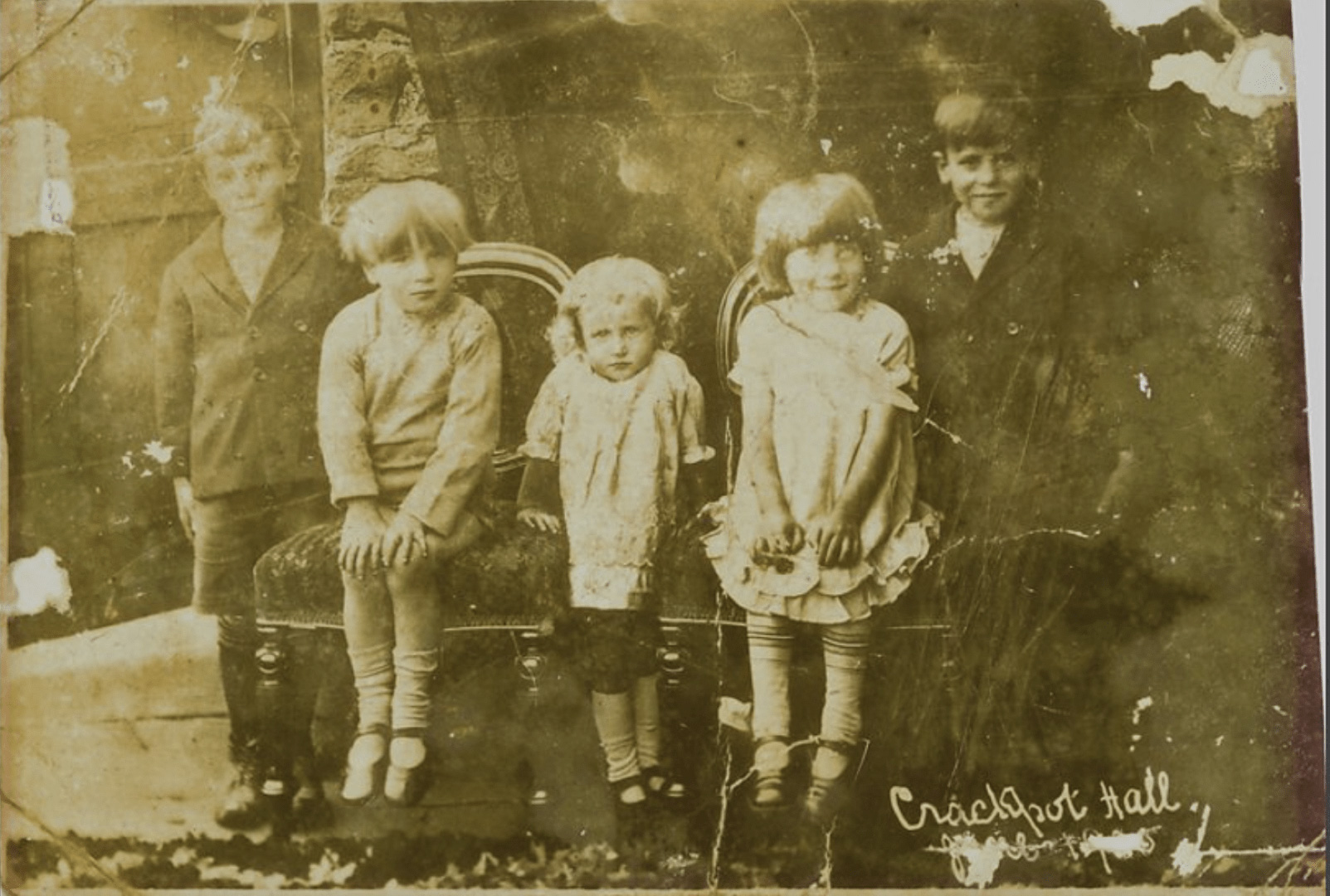
The quotes above are taken from a 1930’s book called Swaledale, written by Ella Pontefract and Marie Hartley who visited the farm and met Alice, starting the myth which lived on until a recent radio programme found Alice living in Carlisle and interviewed her about the encounter.
Having gotten caught up in the legend, I plotted a route to the farmhouse from Keld, also taking in some of the nearby waterfalls, and made an early start on a bright and sunny Spring morning…
Keld Walk & Waterfalls
My walk starts at the car park in Keld (details at the end of the blog) and takes me through the village back out to the road, before turning right and following it for a half a mile to my first waypoint of the day… Wain Wath Force waterfall.
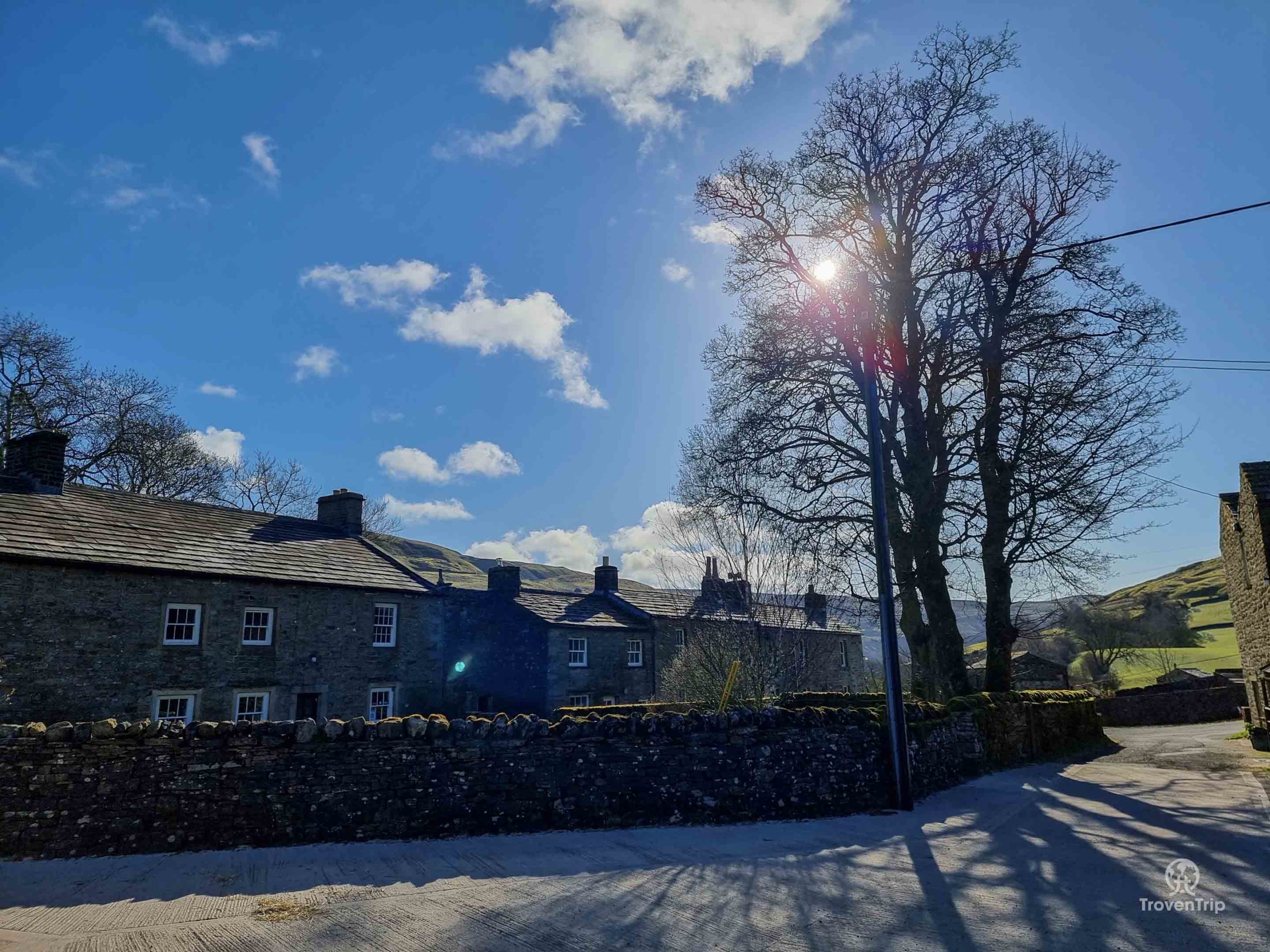



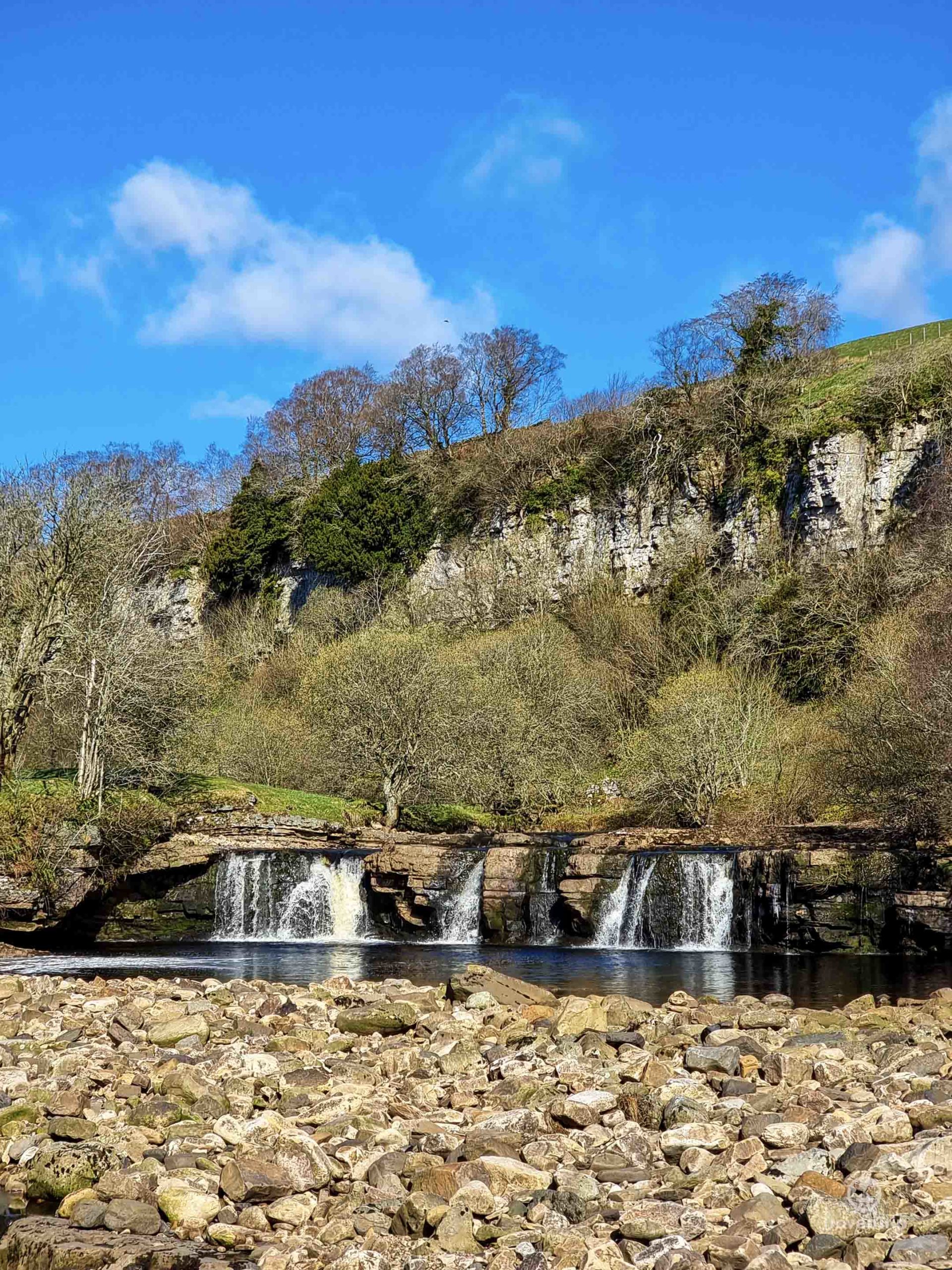
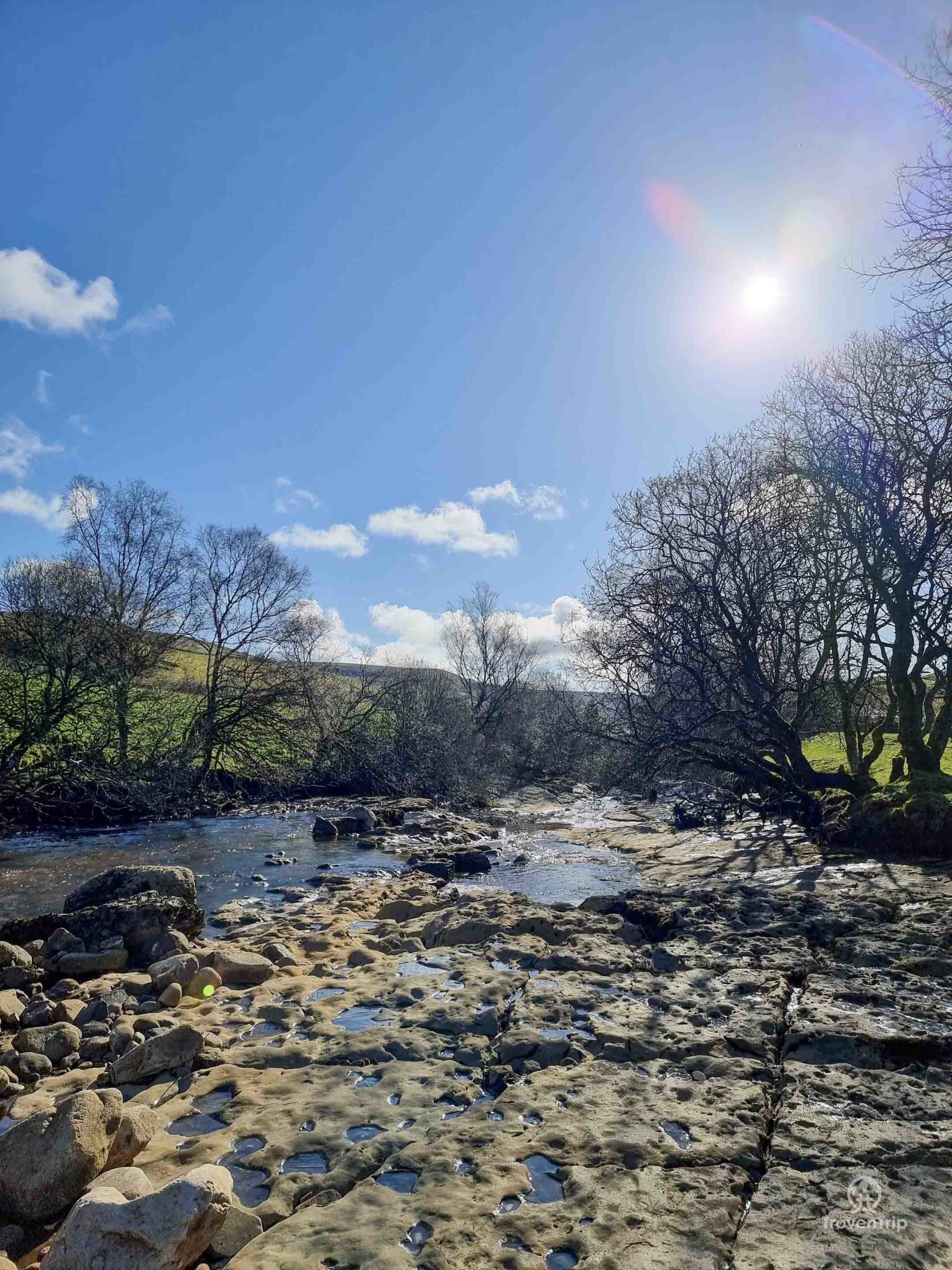
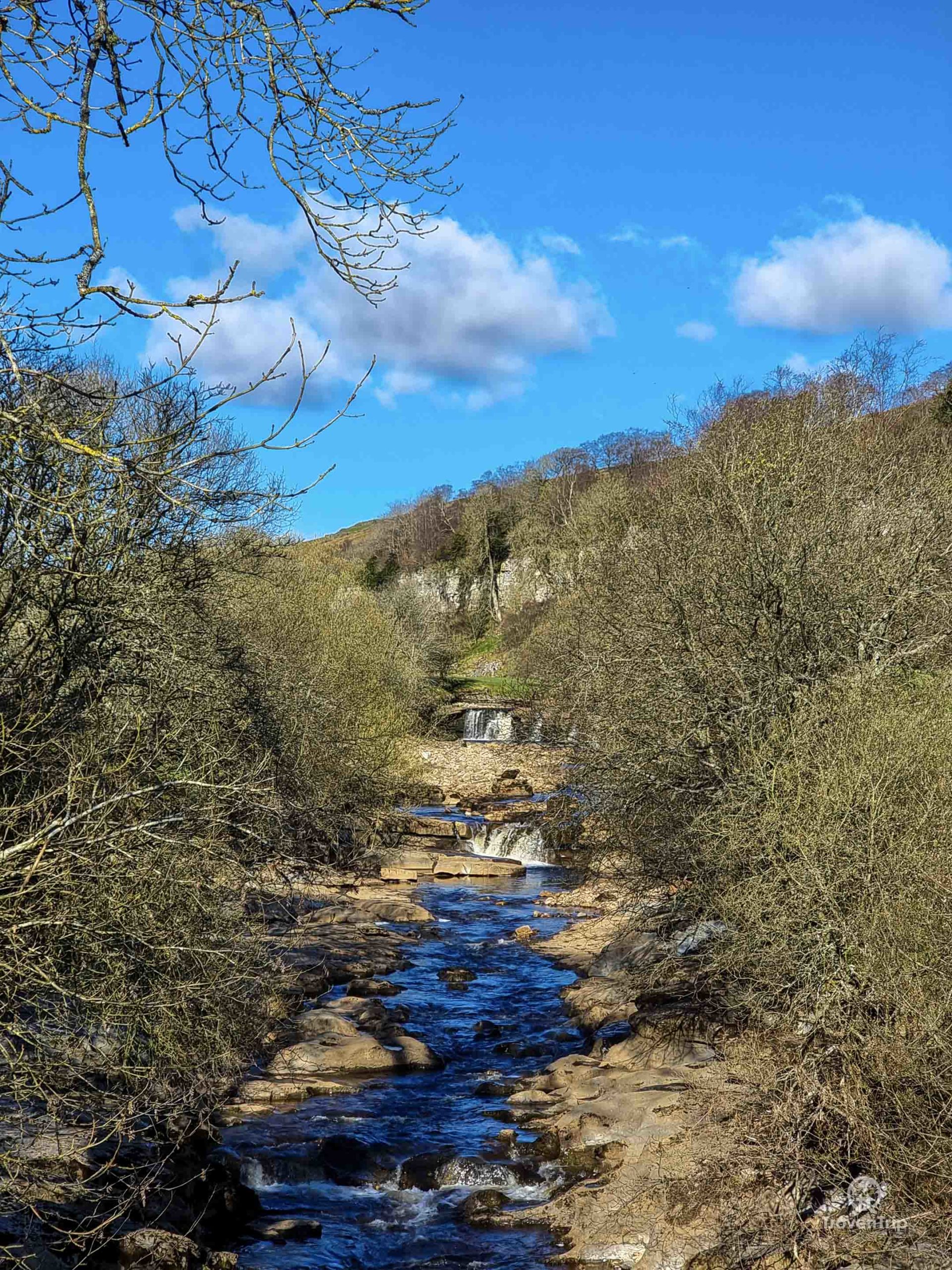

Although not the biggest or most impressive waterfall I’ve ever seen, it’s a really nice spot being able to walk right up to the river’s edge on the rocky ground. And although it’s a beautiful morning, it’s unseasonably cold (-2°C) which is evident from the frost on the grass and the iced over rock pools.
After a few minutes enjoying the tranquillity of the waterfall and river, I head back to the road and go back the way I just came. Just before I reached the waterfall there was a road towards Tan Hill, and it’s this turning I take on the way back and walk up a fairly steep hill.
Fortunately I’m not going all the way to Tan Hill which is 4 miles on (although it does boast the Tan Hill Inn, the highest pub in Britain), and after only a minute or two I leave the road and enter the fields through a farmers gate following the footpath signs.
I pass another waterfall, Currack Force, but don’t get a good sight of it through the trees and so carry on up the footpath.
Despite the cold, the walk up the hill in the sunshine has got me seriously warmed up, so I stop to take off my coat which draws some interested looks from the locals in the field!
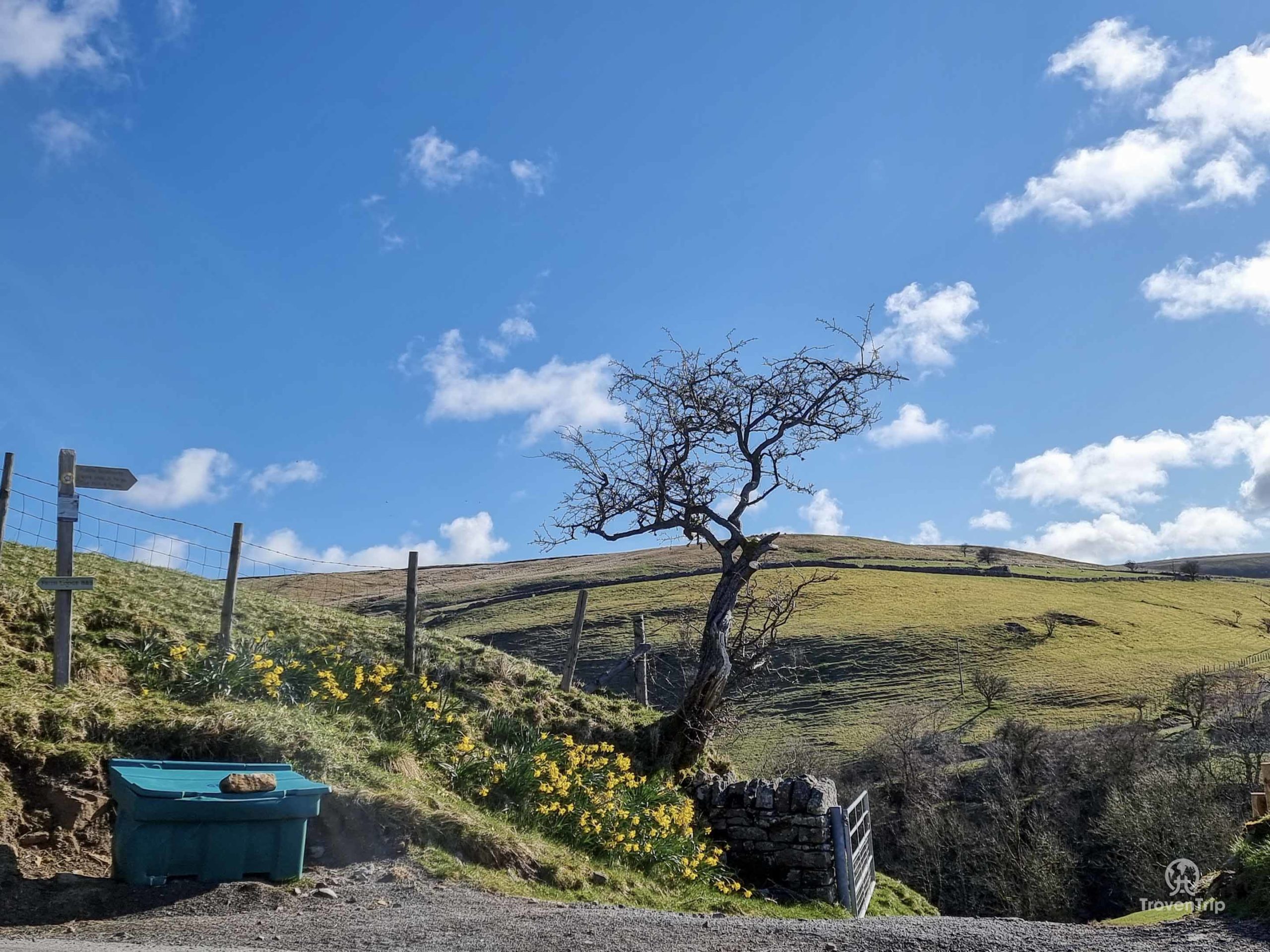


There a lot of newly born lambs who aren’t yet steady on their feet, so I’m careful not to scare them too much as I attempt to tiptoe through them to the next waterfall which I can see down the hill in the distance.
East Gill Force Waterfall
Leaving the field of sheep and lambs behind I can again get really close to East Gill Force waterfall. After working up a sweat on the walk here, I’m almost tempted to jump in, but remind myself that the temperature is still below freezing and I’d rather not get hypothermia! Maybe a trip back during the summer is needed…
I make my way back up to the path and cross the river and valley, and after going through another gate I’m left with a choice… do I continue on the marked footpath circling the edge of the hill, or take the high route and climb it to see where Beldi Hill Lead Mines is marked on the map?
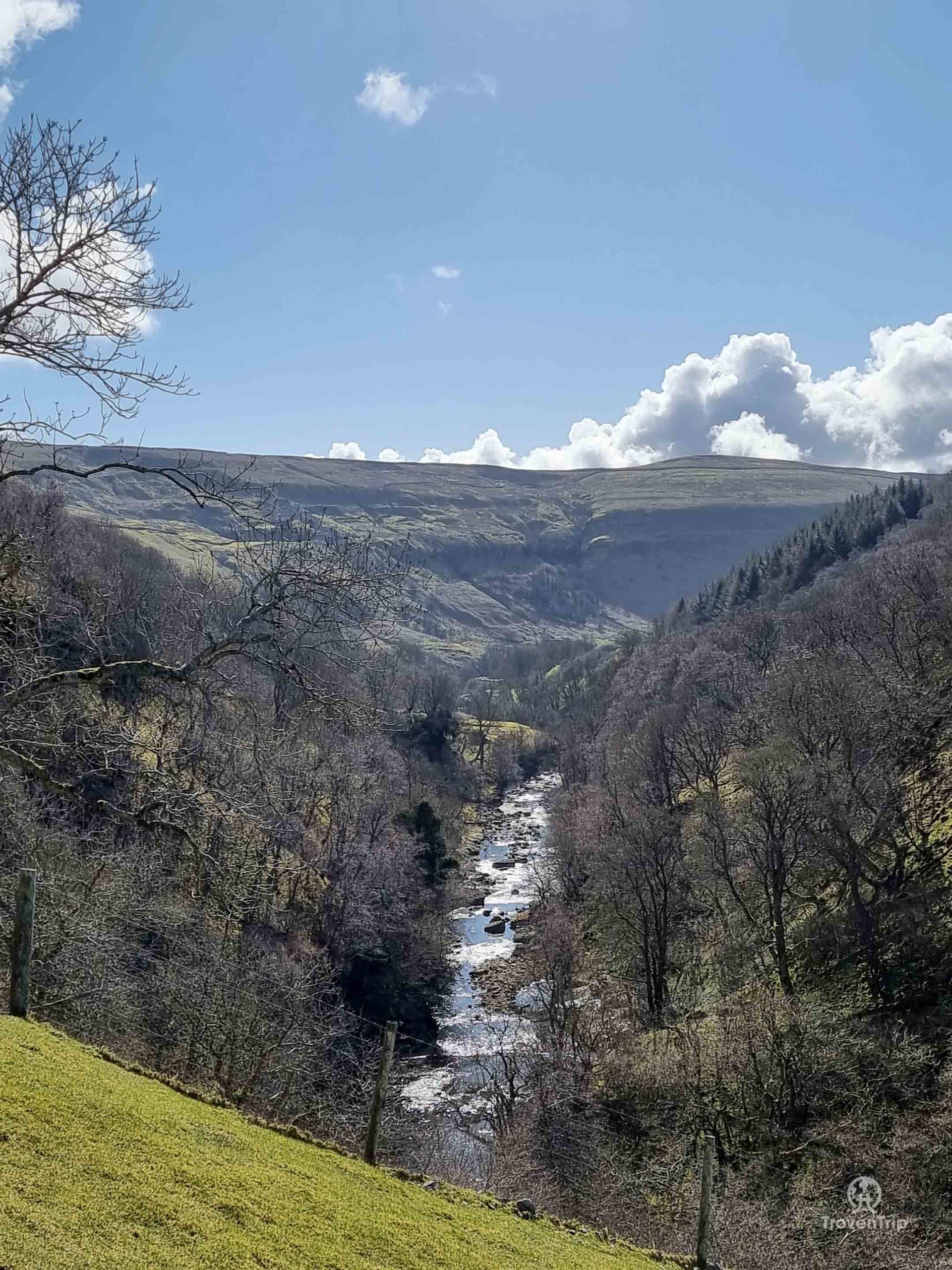

Climbing Beldi Hill
I opt for the high route, a decision I almost regret instantly… the hill is a killer!
The ground is a little marshy, making the climb quite soft and soggy underfoot, and it’s a pretty steep incline. Luckily it’s only about 100m to the top, so there’s no near heart attack incident like with my Switzerland episode! (read about that near death experience at the Charles Kuonen Suspension Bridge here)
But once at the top the effort is worth it… the views over the surrounding valley are amazing! And the rocky outcrop makes for a perfect resting point for the first snacks and coffee stop of the day, allowing me to catch my breath and refuel while soaking in the beautiful views.




With the feeling having returned to my legs I pack up my stuff and make a move, heading over the opposite side of the hill and being met by a very different view… replacing the green and sweeping countryside scene is a rocky limestone cliff, with some evidence of the old mines visible in the crumbling surface. This side of the hill is also still shaded from the morning sun, leaving the footpath iced over.
What is a Cow’us??
Having navigated around the back of the hill I start my descent (which is lot gentler than the climb up was), and the view opens up to give me my first glimpse of the spectacular vista of the Swaledale Valley.
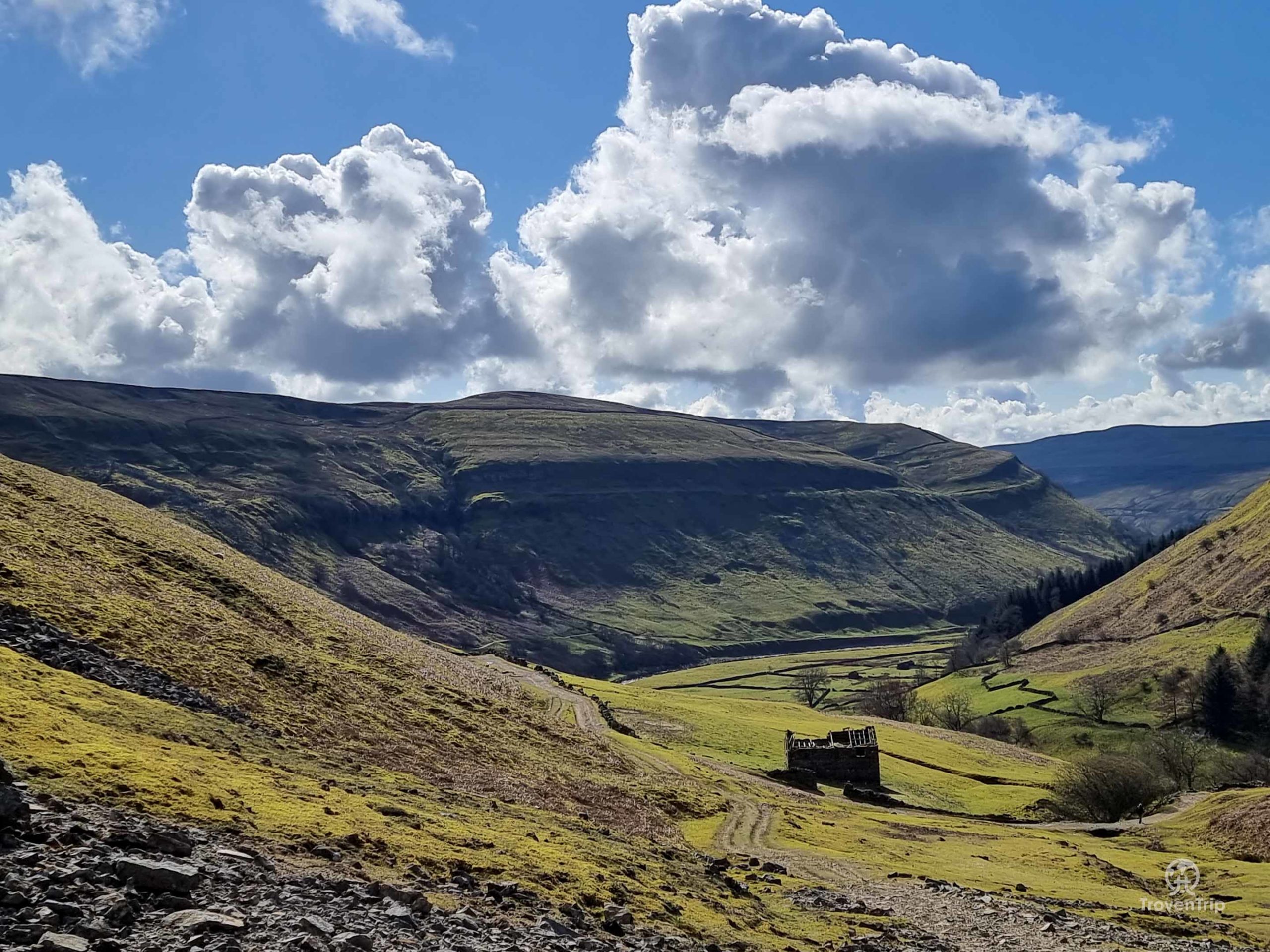

A ruined building is visible just off the footpath at the bottom… could that be Crackpot Hall? I was expecting something a little bigger, and I thought it was a bit further along the footpath too…
As I get closer I realise it’s just an abandoned barn, or Cow’us as the locals apparently call them (is it any wonder the visitors in the 30’s couldn’t understand Alice?!). The shell of the cow’us is largely intact, and provides a warm-up explore before the main event of Crackpot Hall to come…
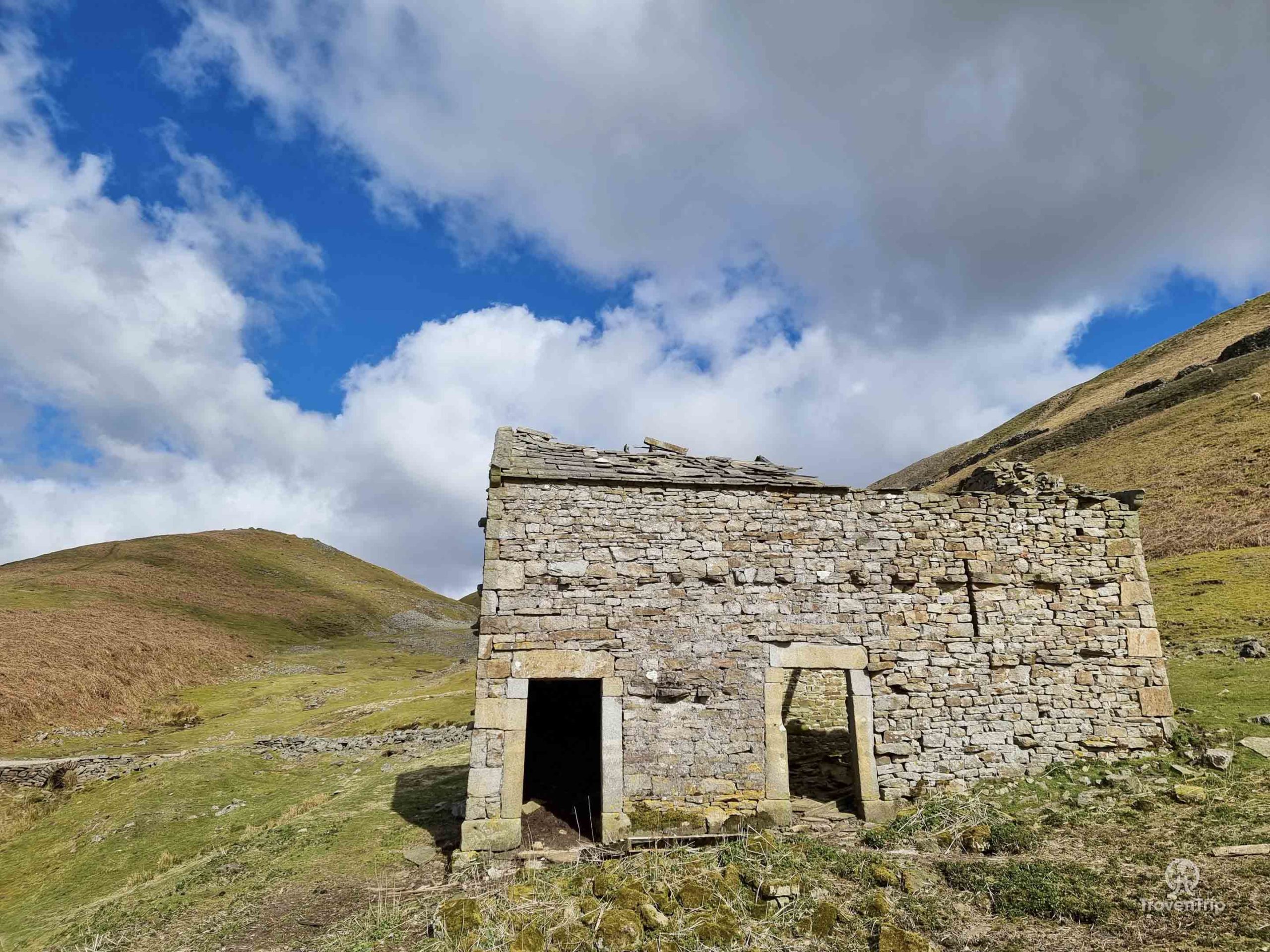






Just outside the cow’us on the footpath is the wreckage of an old quad bike too… completely stripped of all parts other than the rusting metal frame, which seems to be being swallowed by the ground! If only I’d had a working one of these for my walk up Beldi Hill, it would have been a lot easier!
Exploring Crackpot Hall
As I continue on the view is getting better with every step I take, and then I see it appearing over the crest of the hill… Crackpot Hall… the crumbling 18th Century farmhouse whose legend has brought me to this fantastic place!
The farmhouse is nestled into the hillside with incredible views of the valley below… it must have made for an amazing, if very isolated, place to grow up and live for Alice almost a century ago!
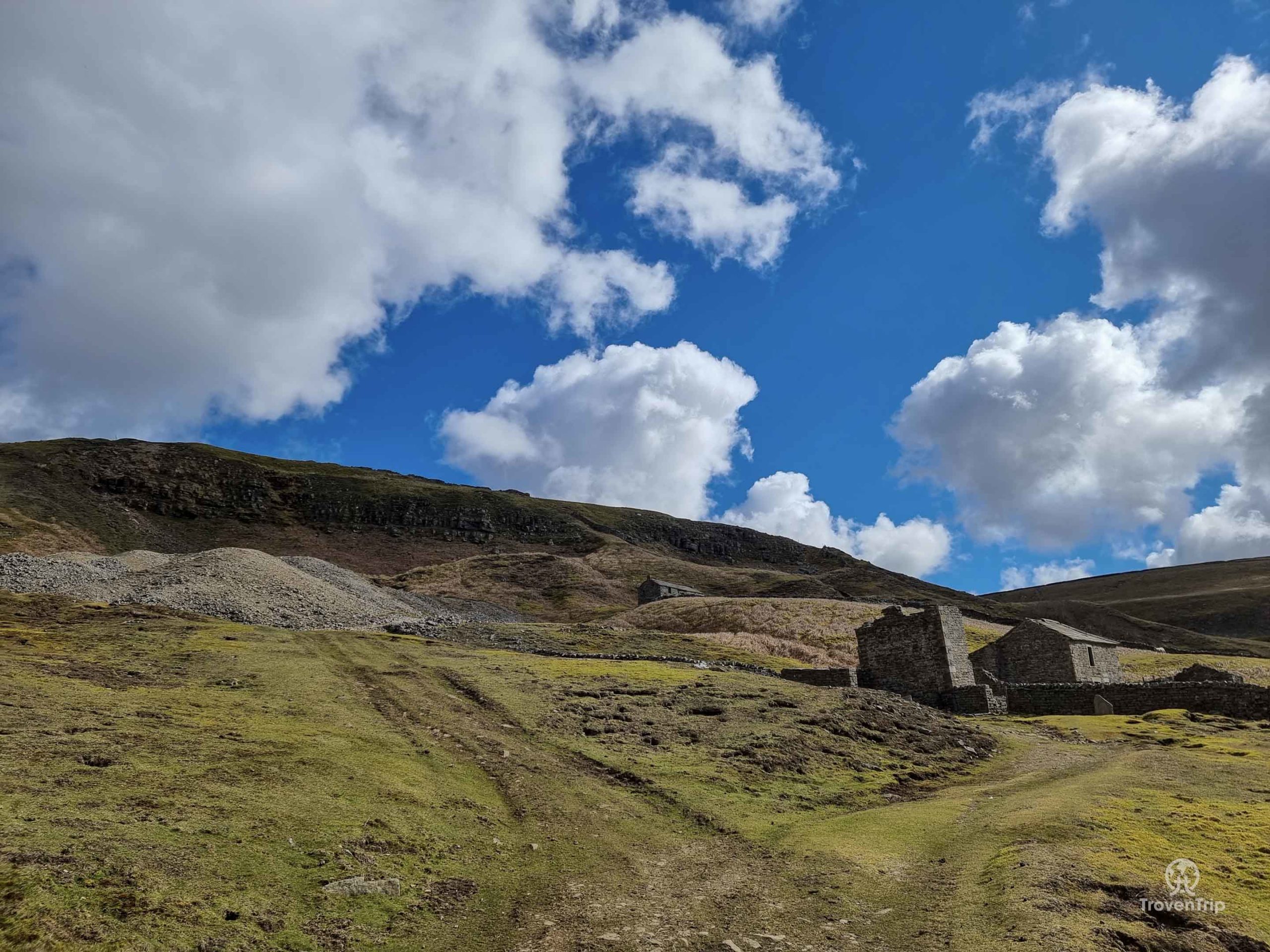

I walk through what I imagine used to be the entrance gate, and after taking in the breath-taking views, I start my explore of the site. Watch the video if you want to join me on the explore, or cycle through the photos below…
Despite the walls and roof being completely ruined on this part of the farmhouse, the rusty old tin bathtub is still on the floor, and the open range still contains an old pot and some broken fragments of pottery and glass. Behind me is another room with a big stone fireplace, and you can imagine huddling up in here with the fire roaring, as the winds and rain battered the old farmhouse in centuries gone by. And from each and every room, doorway, and window, the view out down the valley is amazing!


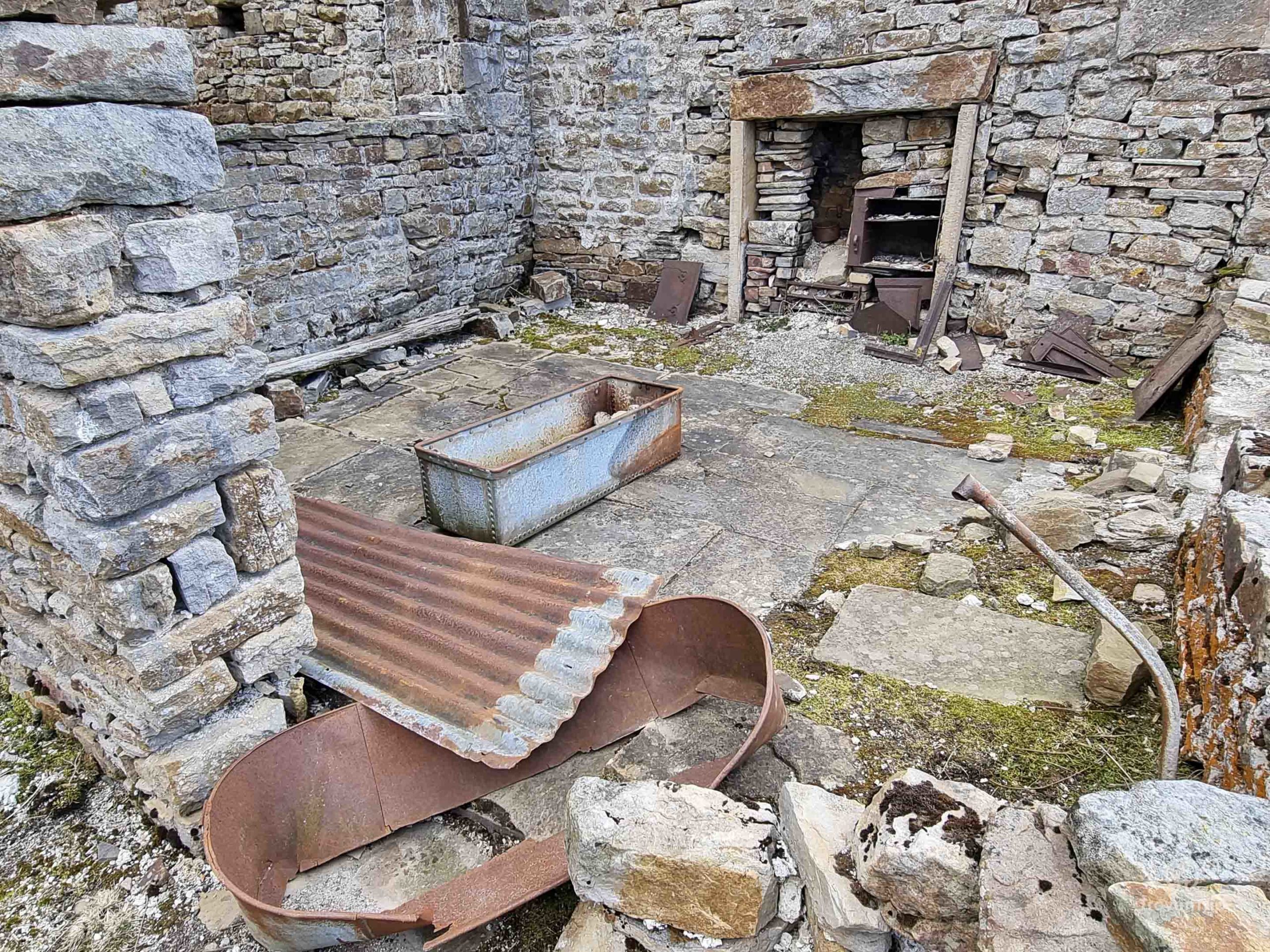





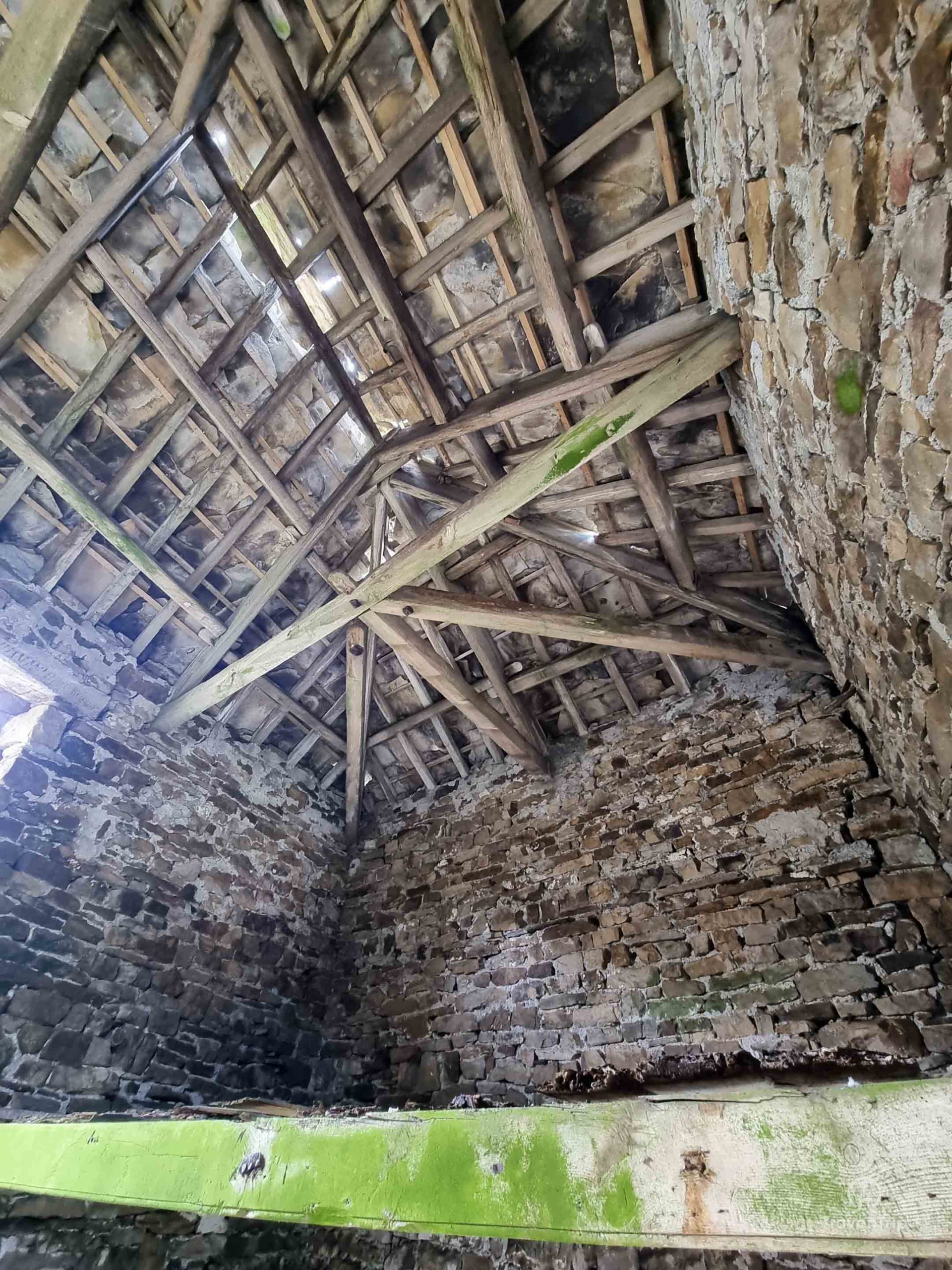
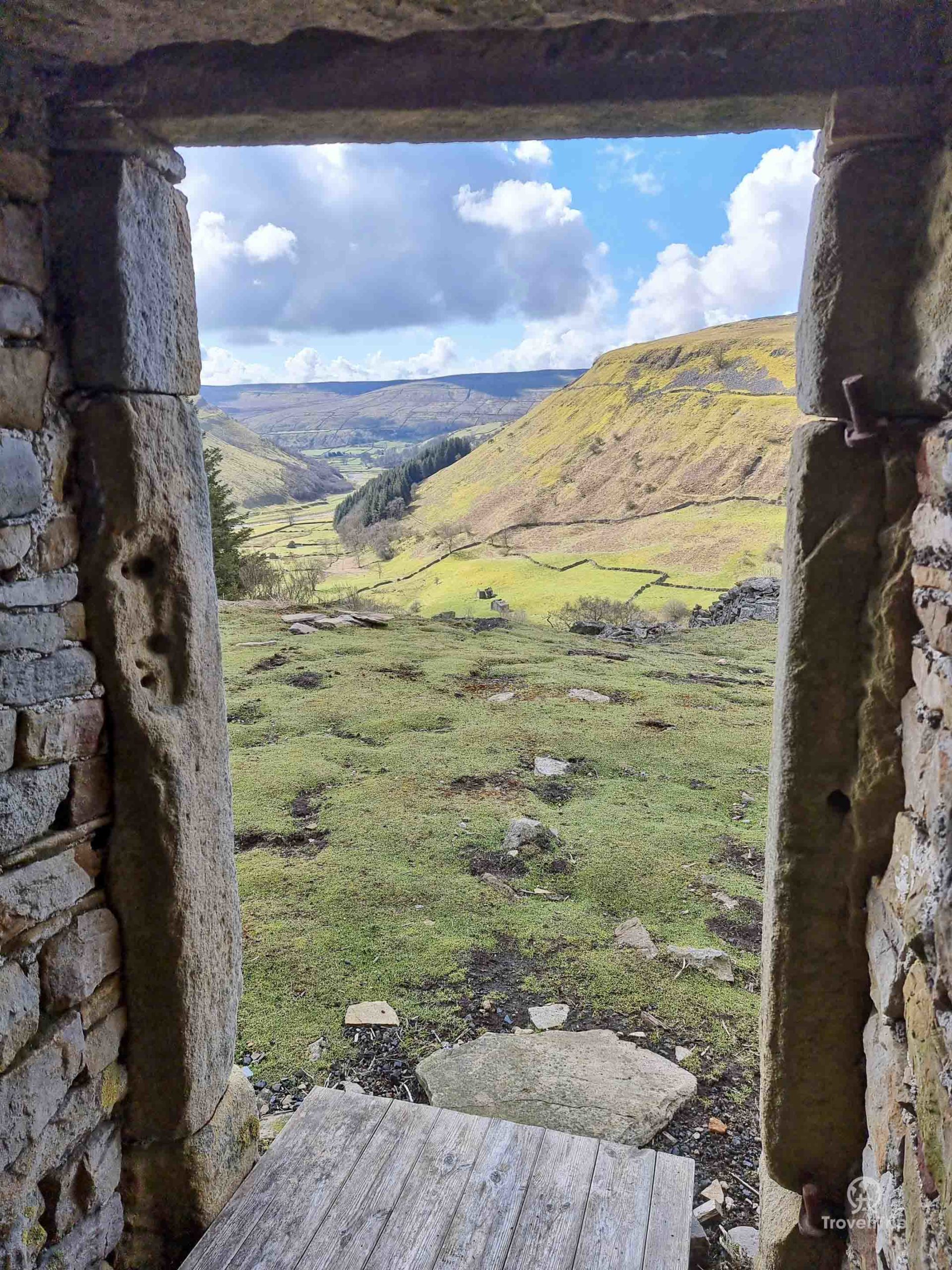


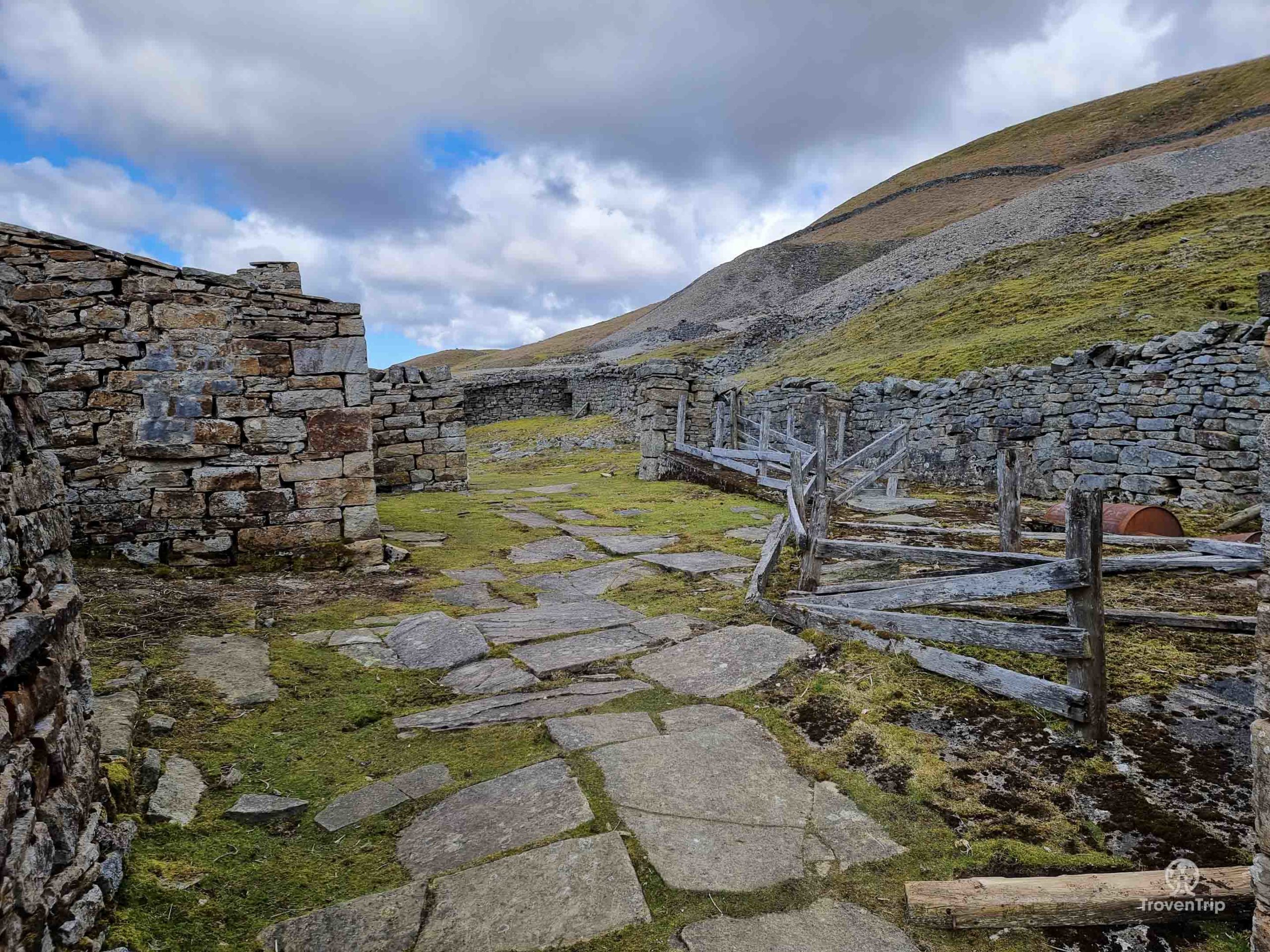
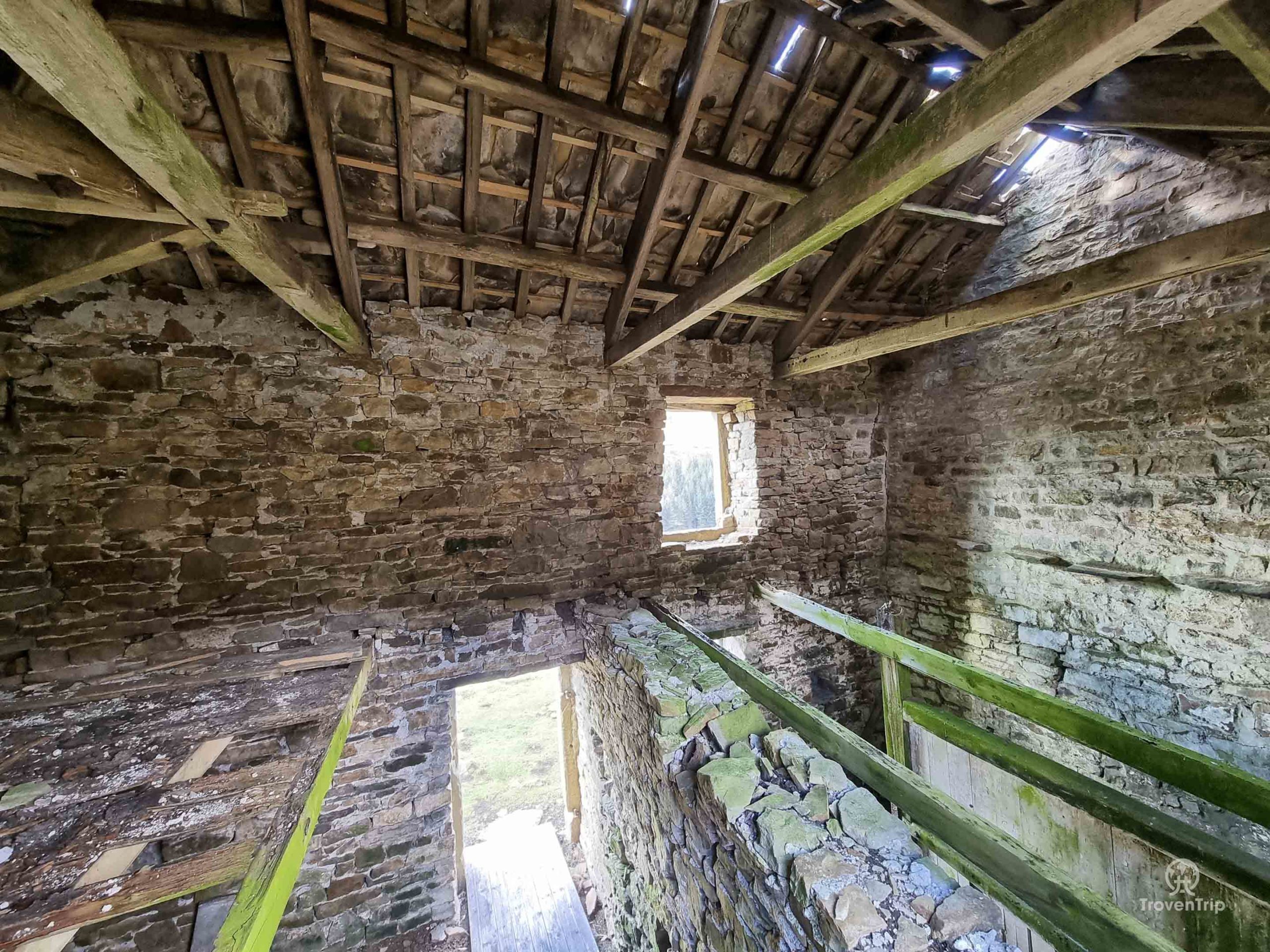




After exploring every corner of the house, outbuildings and yard, I find a comfy looking rock and settle down to have lunch.
Last Viewpoint and Route Back
This is the furthest point on my mapped route, but after having made the map, I spotted another viewpoint icon a little further along the footpath. So with lunch eaten, I take the path on the high-side of the hill behind the farmhouse for another few hundred metres.

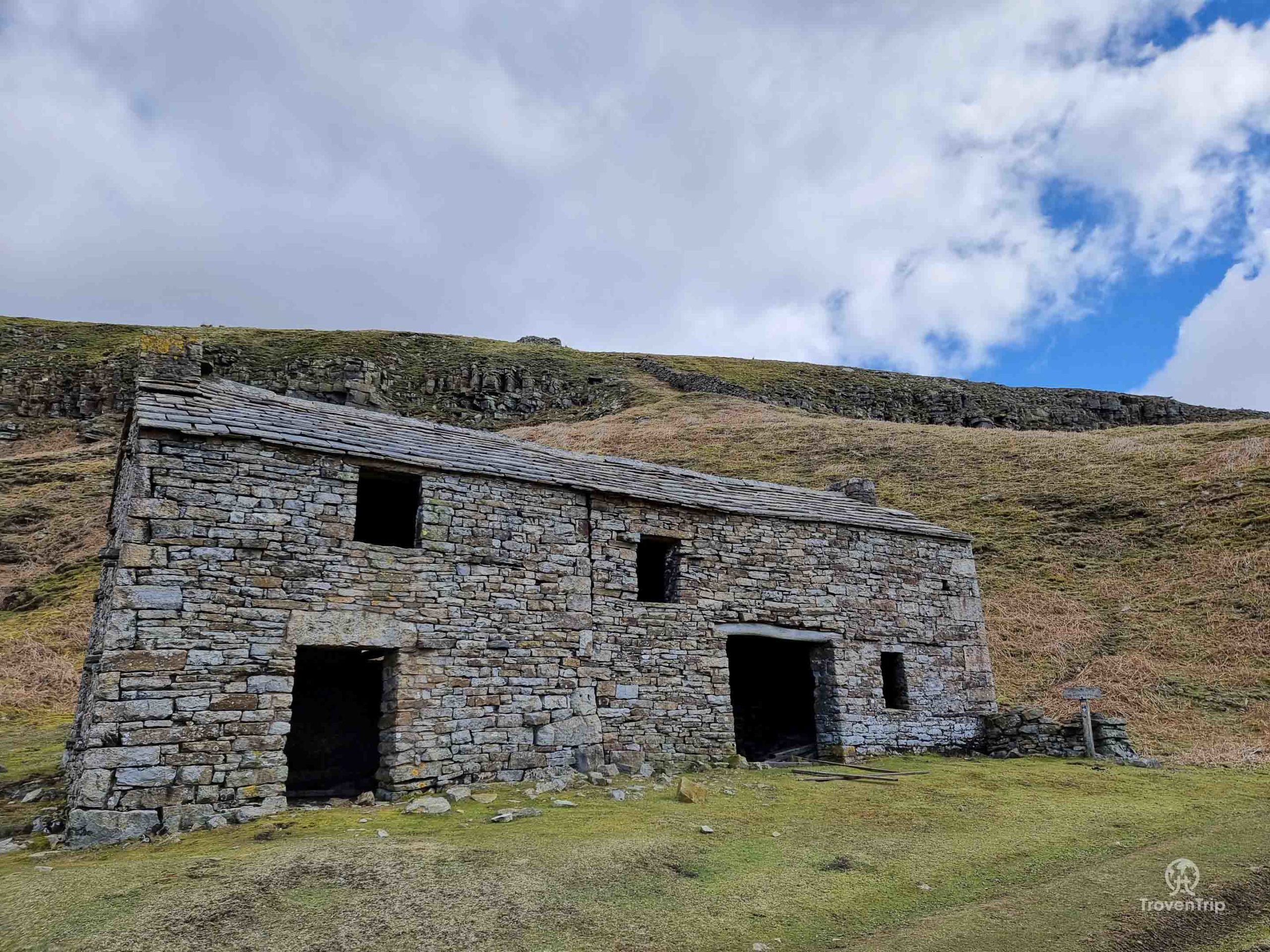



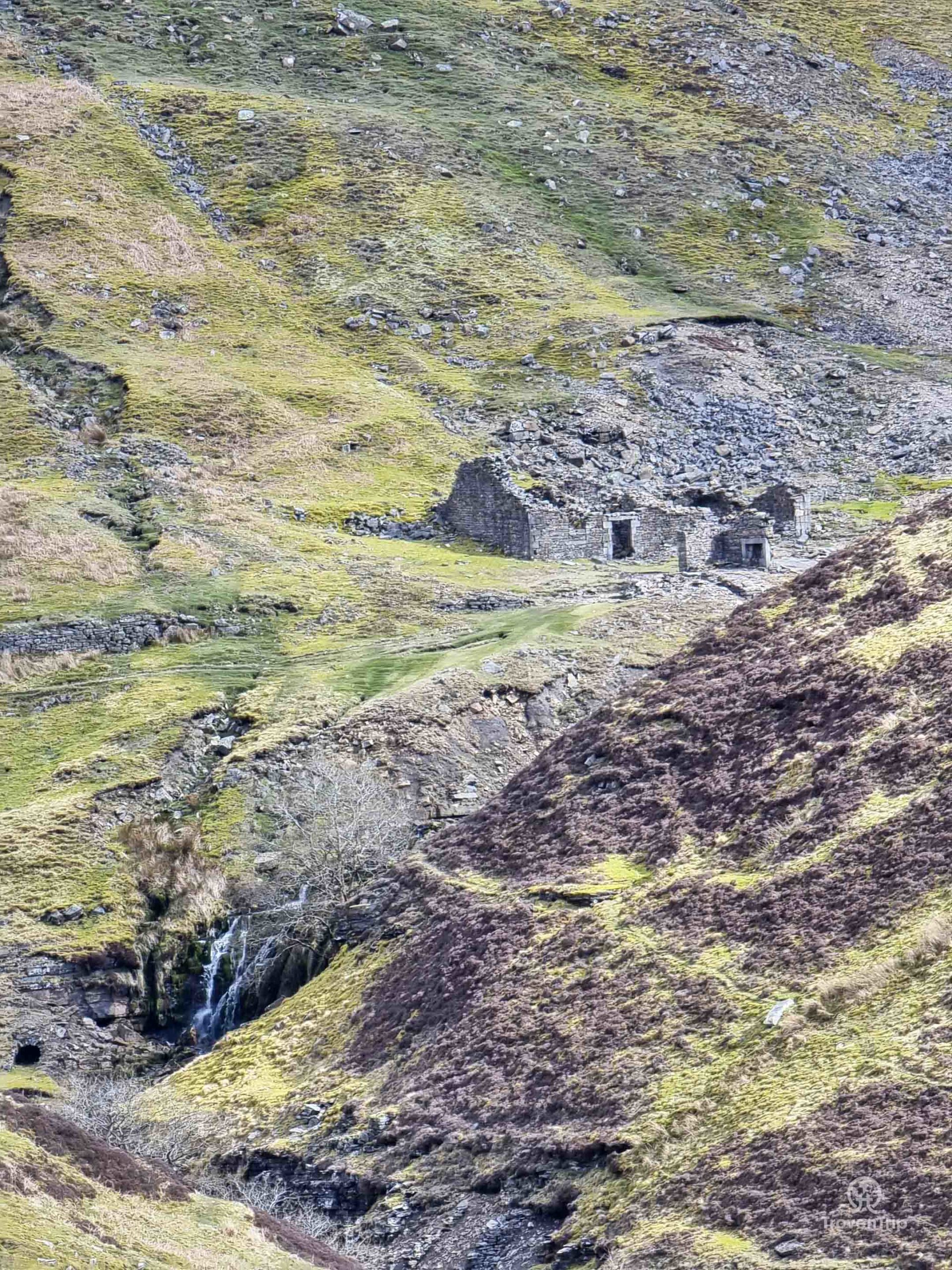
On the way I pass another vehicle wreckage and barn containing some old farming equipment, before rounding a corner and finding the viewpoint on the other side of a gate. Looking in one direction you have an incredible view right down the valley towards the village of Muker (and can see the footpath you can follow to do a much longer loop than I have planned for today), and turning around you look back into the hills and crevices, with more waterfalls bringing water down from the moors to join the River Swale in the valley below.
It’s at this point that I see other people for the first time in over 2 hours as I help orientate a couple of hikers following the path of the coast to coast route which runs through here.
I then head back to Keld (taking the flat footpath past Beldi Hill this time!), stopping at East Gill Force and Kisdon Force on the way, and spotting some farmers herding their sheep high up in the hills above.


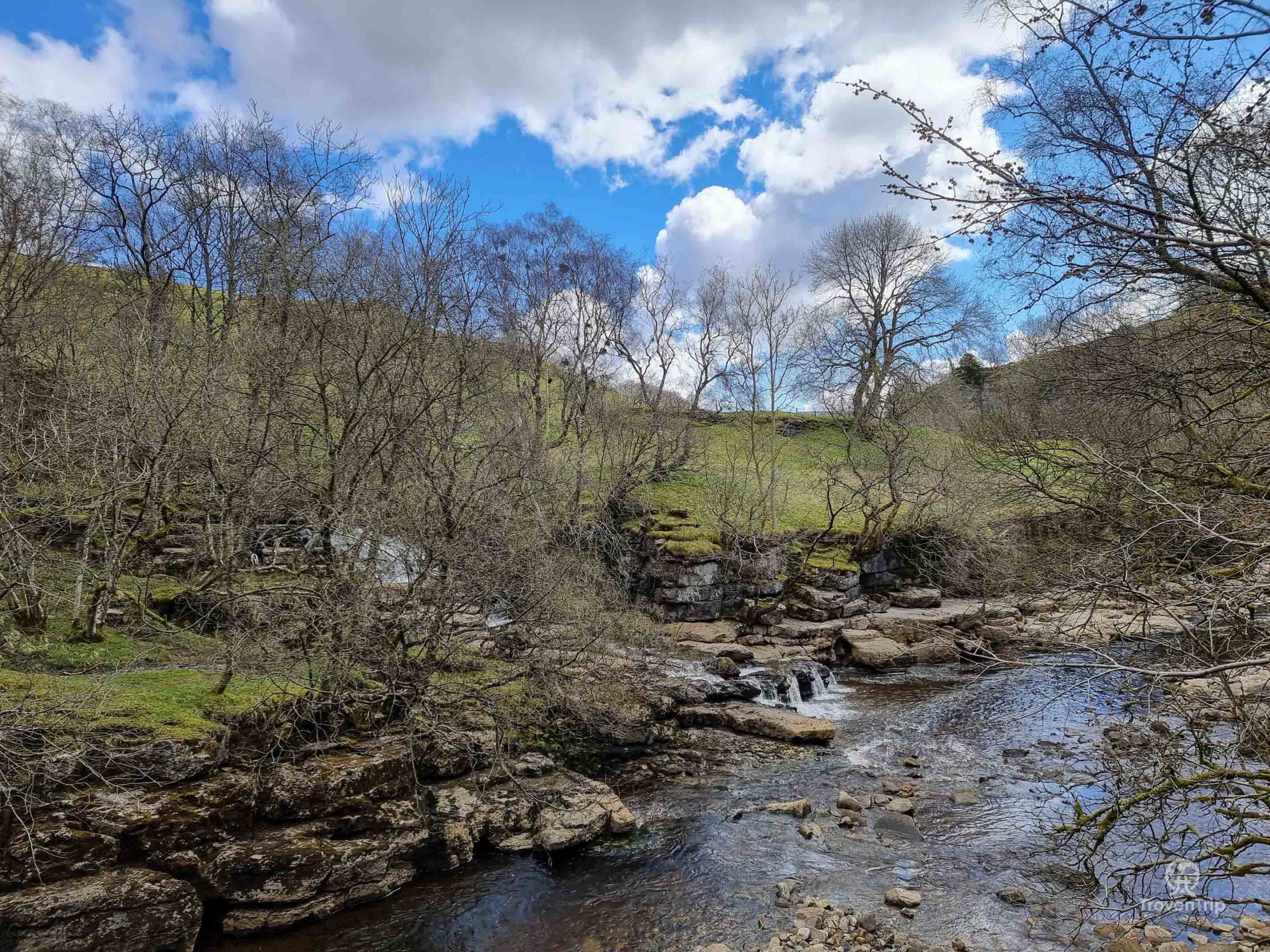


I make it back to Keld and the carpark (which has filled up a little since I arrived), completing the 7km (plus a little bit) route in a rather leisurely 2 and a half hours. But this wasn’t a walk about setting a quick pace… this was about exploring the legend of Crackpot Hall and Alice, while taking in the stunning scenery of the Swaledale Valley. And both exceeded my expectations… it was a great explore and walk, and with the option of avoiding the short ascent of Beldi Hill, it’s also a fairly easy route to do too.
Where can I park in Keld?
Parking is available in Keld, postcode for sat nav DL11 6LJ, in a farmer’s yard at the end of the road which winds through the village. It costs £2 for a short-stay, or £3 for all-day parking paid into an honesty box.
Are there toilets in Keld?
Yes, there are public toilets in the car park.
Is there a walking route for Crackpot Hall?
I started my walk at the entrance to the car park, this is the route I followed... https://www.alltrails.com/explore/trail/england/north-yorkshire/crackpot-hall-and-keld-waterfalls-circular



And if you’re interested in the radio program which tracked down Alice and told her story, it’s available on BBC Sounds here.


Be the first to leave a comment
Relateable posts
-
blog
-
United Kingdom
Aug 3, 2023Chatsworth House in Derbyshire… One of Britain’s Best Stately Homes and Star of Pride and Prejudice
Chatsworth House in Derbyshire is one of the best known and most loved stately homes…
-
blog
-
United Kingdom
Mar 20, 2022Hiking Harden Beck to the Wonderful Goit Stock Waterfall
What better way to spend the first day of Spring than a walk in nature…